As we mark the start of this year’s stamp sales, we’re highlighting some of the cool things about the Duck Stamp.
1. The Federal Duck Stamp is one of the oldest conservation efforts. The Federal Migratory Bird Hunting and Conservation Stamp (commonly known as the Federal Duck Stamp) was born in the dust bowl days when President Franklin D. Roosevelt signed the Migratory Bird Hunting Stamp Act in 1934 to protect wetlands that are vital to the survival of migratory waterfowl. Those same wetlands also benefit countless other non-waterfowl species and us. Since that first stamp, sales have raised more than $950 million to help clean water, aid in flood control, reduce soil erosion and sedimentation and enhance outdoor recreation opportunities.
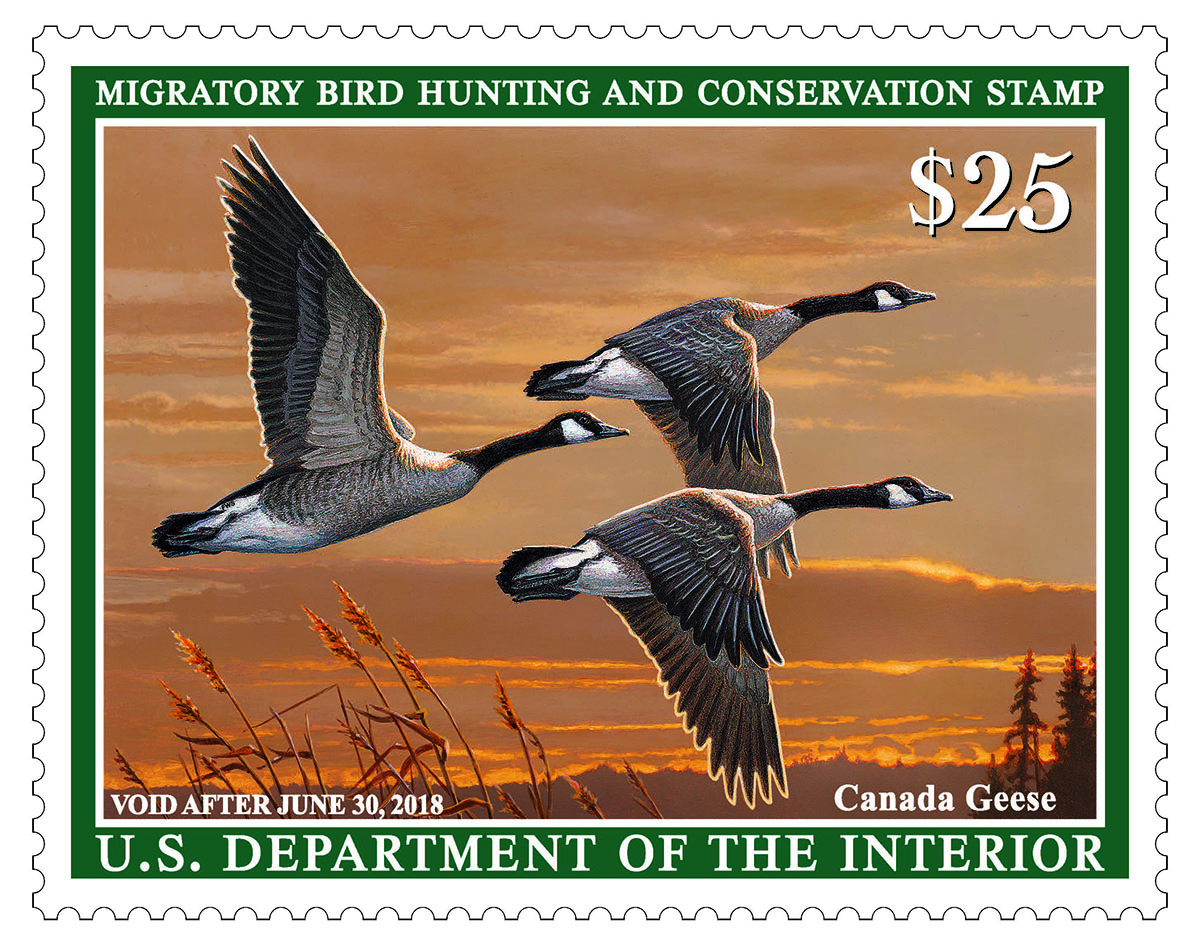 The 2017-2018 Federal Duck Stamp features Canada geese with art by Jim Hautman. Credit: U.S. Fish & Wildlife Service.
The 2017-2018 Federal Duck Stamp features Canada geese with art by Jim Hautman. Credit: U.S. Fish & Wildlife Service.2. Waterfowl hunters have fueled the Duck Stamp effort. Hunters have always played an integral part in conserving America’s natural resources, and the Duck Stamp is a great example. Many sportsmen buy more than one Duck Stamp a year, helping to protect or restore nearly 6 million acres of habitat for birds and other wildlife.
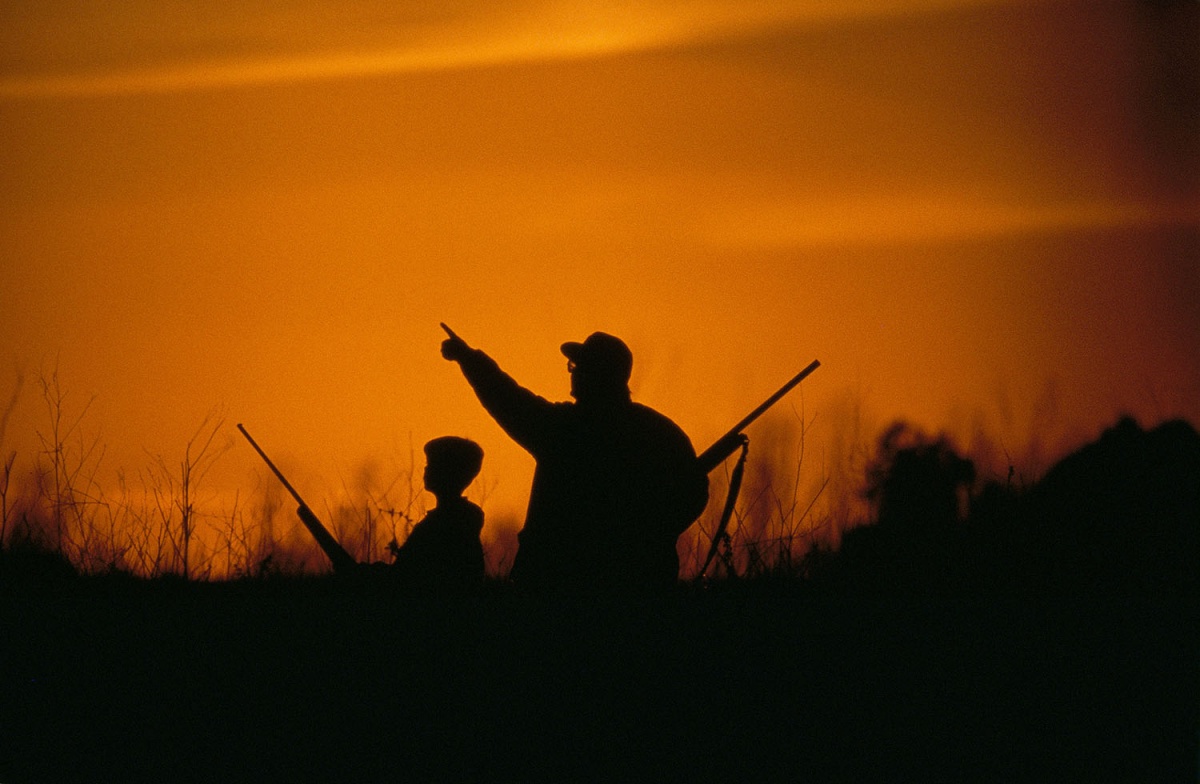 A father and son hunting together. Photo by U.S. Fish & Wildlife Service.
A father and son hunting together. Photo by U.S. Fish & Wildlife Service.3. The Duck Stamp has become a collector’s item. Every year the U.S. Fish & Wildlife Service holds an art contest to select the stamp design, making these stamps miniature works of art and a treasured item to stamp collectors around the world. With over an 80-year history, the Duck Stamp is the longest-running single themed U.S. stamp, adding to their collectibility. There is also a Junior Duck Stamp art contest that draws some of the nation’s best young waterfowl artists.
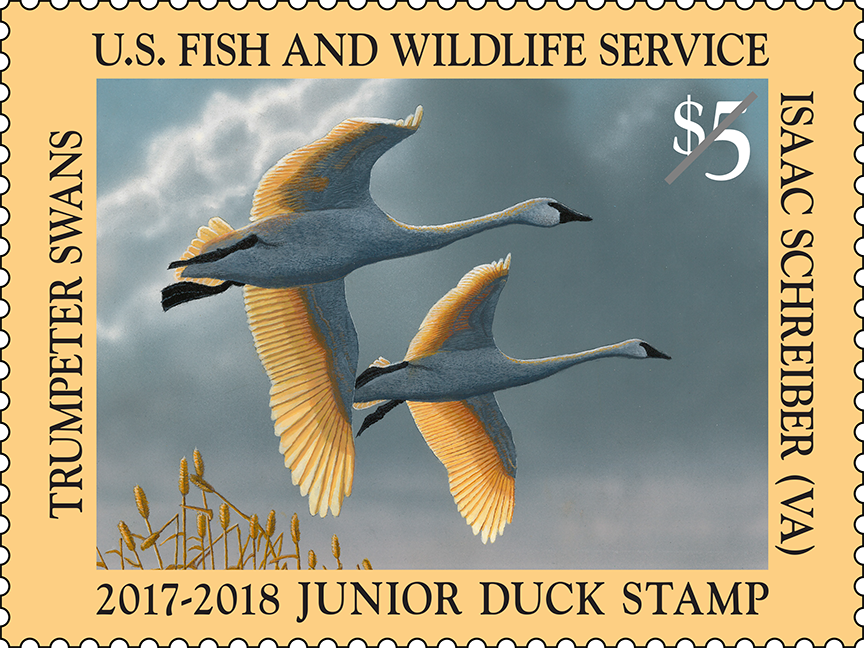 The 2017-2018 Federal Junior Duck Stamp includes a pair of trumpeter swans painted by Isaac Schreiber. Credit: U.S. Fish & Wildlife Service.
The 2017-2018 Federal Junior Duck Stamp includes a pair of trumpeter swans painted by Isaac Schreiber. Credit: U.S. Fish & Wildlife Service.4. One family has collectively won the Duck Stamp art contest 12 times. The first Duck Stamp was a sketch designed by J.N. “Ding” Darling, the director of the Bureau of Biological Survey (forerunner to today's U.S. Fish & Wildlife Service). In 1949, the first art contest for the Duck Stamp was held and open to any U.S. artist. Today they have to be 18 years old to submit an entry. Since 1990, the Hautman brothers -- James, Joseph and Robert -- have won 12 contests. Joseph and James, the current winner, have five wins each, tying for the most wins by an individual ever.
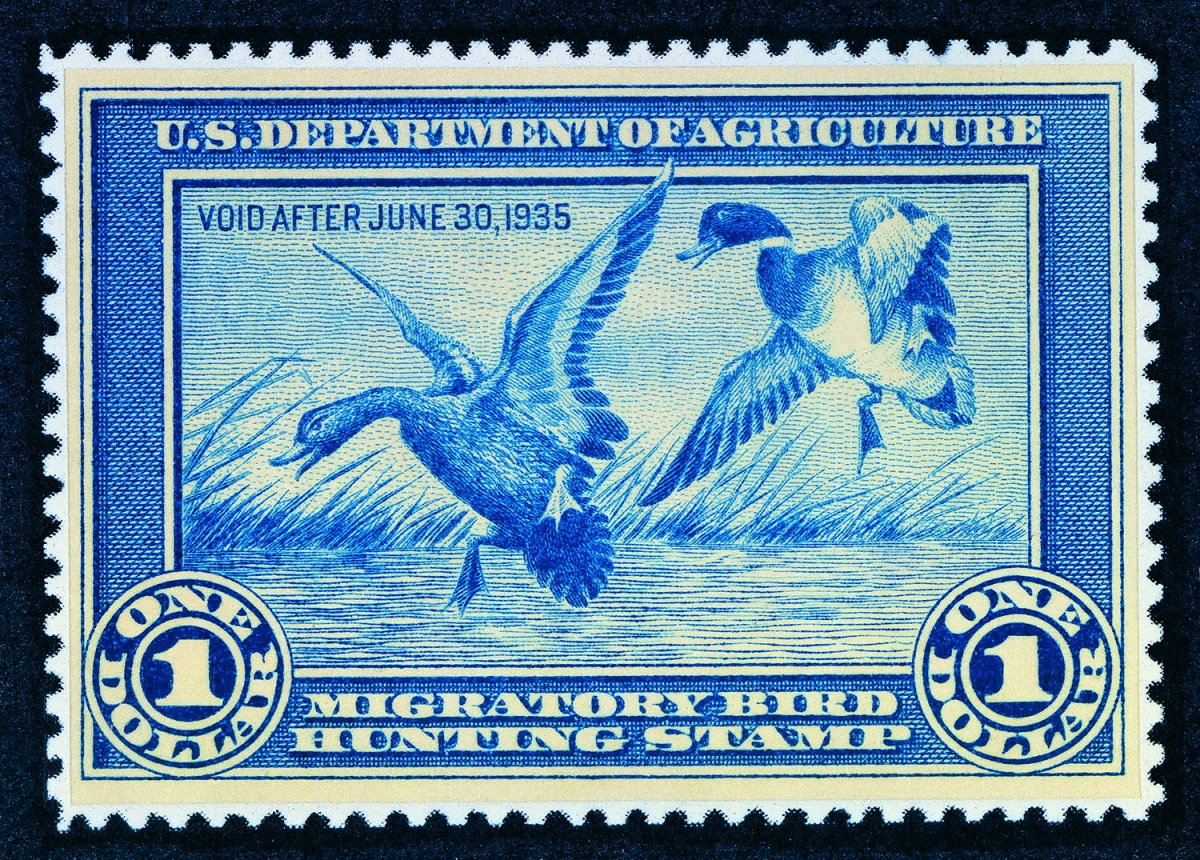 The first Duck Stamp was brush and ink drawings of Mallards by Jay N. "Ding" Darling, a famous cartoonist and noted conservationist. Credit: U.S. Fish & Wildlife Service.
The first Duck Stamp was brush and ink drawings of Mallards by Jay N. "Ding" Darling, a famous cartoonist and noted conservationist. Credit: U.S. Fish & Wildlife Service.5. Duck Stamps are good for recreation. A current Federal Duck Stamp is a free pass into any national wildlife refuge that charges an entry fee. The result: Birders, nature photographers and other outdoor enthusiasts buy Duck Stamps to help ensure they can always see wildlife at their favorite outdoors spots. Since in recent years the stamp has become popular with birders and conservations, the carrier of the stamp now features a non-waterfowl migratory bird to highlight citizen conservation actions.
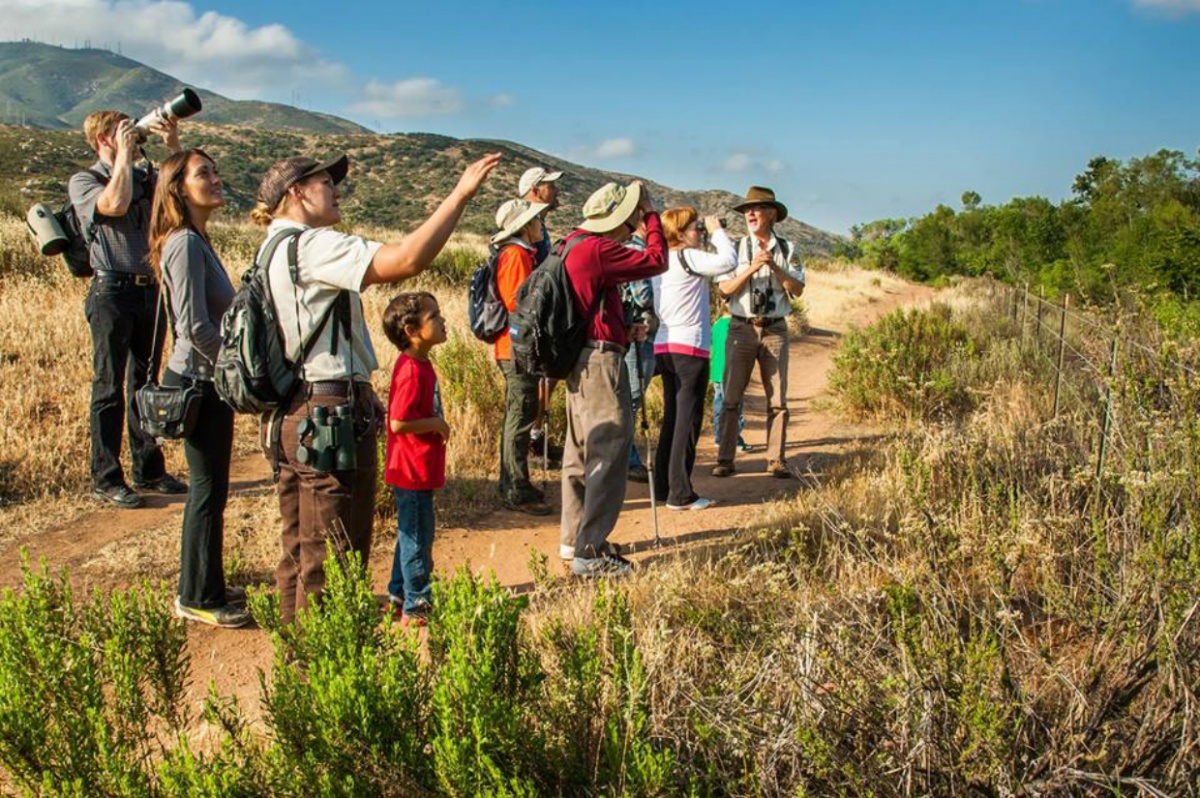 A group joins a ranger at San Diego National Wildlife Refuge in California. Photo by U.S. Fish & Wildlife Service.
A group joins a ranger at San Diego National Wildlife Refuge in California. Photo by U.S. Fish & Wildlife Service.Buy your Duck Stamp today at a sporting goods store, post office or national wildlife refuge near you.
Source: DOI









